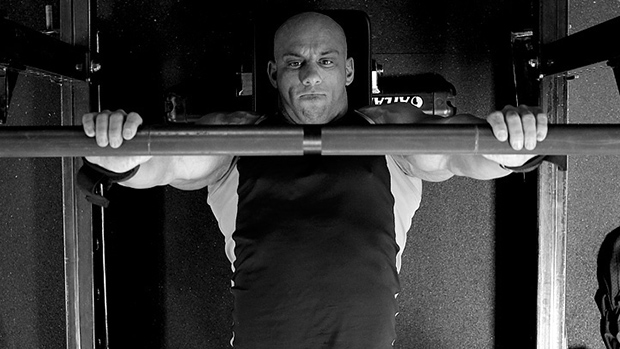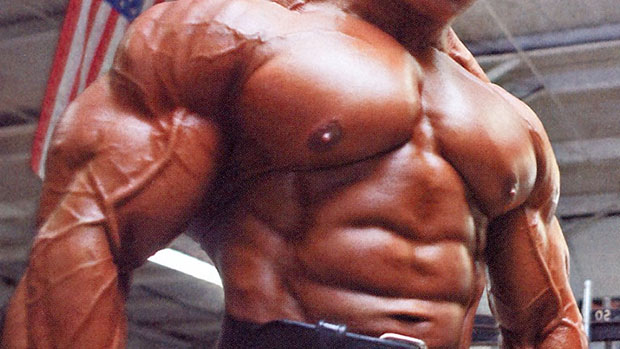Not getting tight and solid before unracking the bar is responsible for more missed heavy squats, injuries, and bad performances than everything else.
See, most people just unrack the bar without thinking too much about it; they stay soft or at least don't make a conscious effort to get tight. Then they walk back in that weak position and try to establish tension before squatting. By that time it's too late.
First, unracking the bar without being tight will make the bar feel a heckuva lot heavier, which can psych you out, and walking backward with that suboptimal tension is dangerous. Plus it's harder to assume a strong setup right before squatting if you didn't start that way. So before you take the bar out of the rack make sure that:
- You're squeezing the life out of the bar with your hands.
- You're trying to crush your ribcage with your elbows to engage the lats.
- You're squeezing both shoulder blades together.
- You're contracting your abs as if you were going to get punched in the stomach.
- Then you unrack the bar, but do it like you mean it. The lift starts when you unrack the bar. Show the bar who's boss. Whether you have the empty bar or a max effort weight, set up exactly the same way and with the same intent.
Practice With Cluster Sets
By the way, that's why I love cluster sets for squats. For clusters you do a set of several reps with 10-20 seconds of rest between reps. You rack the barbell after every rep.
It will give you the opportunity to practice the setup and unracking of the bar several times in a set. That's on top of the other benefits of cluster training.





